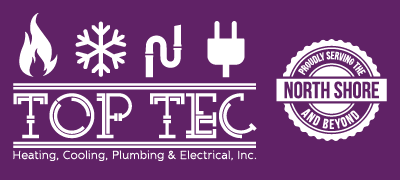We all like saving money on our monthly utility bills, but it just so happens there’s a way to lower energy use, even when you’re not even home.
It starts with your thermostat. By using automatic schedules, you can structure its daily schedule around your personal preferences. This means establishing various temperature settings for when you’re at home, away or even when you’re sleeping.
If you’re willing to make these adjustments, you have more time to enjoy pleasant temperatures while cutting down your energy bills. Check out our guide on how your thermostat doesn’t have to use up all your summer spending money:
While at Home
When you’re home, you want to enjoy a comfortable temperature. It’s only natural to want your thermostat lower in the summer while you are in the house to appreciate the cool air.
But in terms of energy efficiency, the best range for the summer is in fact anywhere between 78 and 80 degrees Fahrenheit. This way, you’ll keep cool while still lowering your monthly energy bill.
While Away
If you’re setting the temperature for whenever you’re gone, the majority of homeowners will set the thermostat higher than you would if you were in the house.
Depending on the local climate or your home’s location, you can set the thermostat to temperatures as high as 88 degrees while no one is home before you adjust it back to the sweet spot of 78-80 degrees after you return. This way, your air conditioning won’t have to work constantly to cool an empty house.
While Sleeping
When it comes to sleeping in the summer, you want a nice cool temperature. A good rule of thumb is between 68-72 degrees Fahrenheit. This will keep you from getting too hot or too cold while you’re trying to sleep.
Additional Ways to Reduce Energy Use:
- Put in a smart thermostat: Trying a smart thermostat in the summer is an excellent way to reduce energy costs since it can plan your temperature adjustments according to your lifestyle and home environment. It’ll take care of making changes while you are home or sleeping, before allowing it to warm up when no one is around. Using reputed brands and models such as the Lennox iComfort, you can adjust the temperature remotely through your smartphone, tablet or laptop. Scheduling smart thermostat installation in your Libertyville home can be the simplest strategy for maintaining comfortable, yet energy-efficient temperatures no matter where you are.
- Update your existing HVAC system: A new HVAC system saves money right from the start. By investing in a more energy-efficient system, lower utility bills won’t be far behind since it requires less energy to reach your preferred temperatures. Air conditioning installation in Libertyville is a great way to beat the heat in the summer.
- Keep up with AC maintenance: Hiring a skilled professional to perform regular air conditioning maintenance in Libertyville can have a serious effect on your total monthly energy use. By regularly cleaning the coils, checking for damage and clearing air vents of dust and debris, this can help your HVAC system perform better during day-to-day use.. More efficient operation reduces strain on key parts and lowers operational costs, lowering total energy use and eventually the total monthly bill.
- Clean or replace the air filter on a regular basis: Regularly changing the air filters in your HVAC system saves money by helping air flow efficiently through your air conditioner. When filters are clogged with dirt and debris, air conditioners have to work harder, and this greater strain could shorten the system’s life span and result in breakdowns.
- Check if you have enough insulation in the attic: Insulation is a vital part of maintaining an energy-efficient home, keeping the hot air outside and the cool air inside over the summer. The North American Insulation Manufacturers Association (NAIMA) suggests that homeowners living in southern climates should possess at least 13-14 inches of insulation, while colder climates do better with 16-18 inches.
- Inspect your ductwork: Damage to the ventilation is capable of increasing your energy bills much more than 20 percent, plus it can potentially allow harmful emissions from your water heater, clothes dryer and other appliances throughout your home. Checking your ductwork for leaks and sealing them can fix both of those problems.
- Seal all other leaky spots in your home: Sealing leaky spots in your home with caulk, foam sealant or weather-stripping helps keep things cooler during those hot summer days. You should also check for any gaps around windows, doors and even outdoor fixtures. Taking the time to seal up any leaks now can help you save a lot over time.
